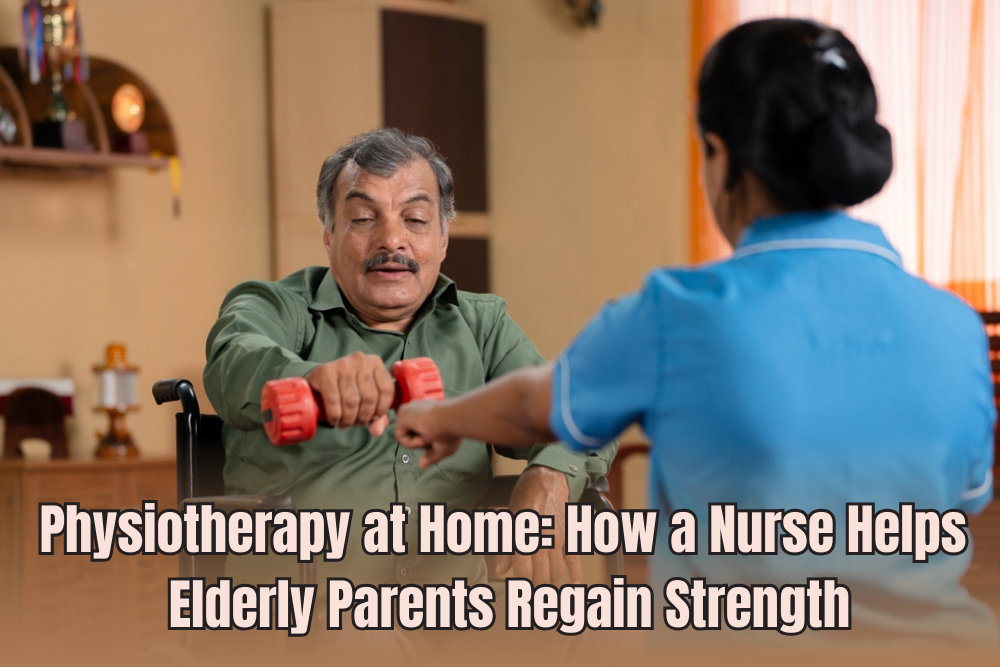Recovering from hip or knee replacement surgery can be challenging, especially for seniors. The healing process requires proper care, physical support, and medical attention to ensure a smooth and speedy recovery. A trained caretaker plays a crucial role in assisting seniors during this period, providing the necessary support to help them regain mobility, manage pain, and perform daily activities safely.
This article explores how caretakers assist seniors in post-surgery recovery, ensuring they heal comfortably while minimizing complications.
Why Seniors Need Special Care After Hip or Knee Replacement
Seniors recovering from joint replacement surgeries often face difficulties such as:
- Limited mobility and difficulty walking
- Pain and swelling
- Risk of falls and injuries
- Need for regular physiotherapy
- Medication management
- Emotional stress and frustration
A trained caretaker helps address these challenges, ensuring that the senior receives proper care throughout the recovery phase.
How a Caretaker Supports Recovery After Surgery
Assisting with Mobility and Movement
Caretakers help seniors move safely, assisting them in getting in and out of bed and supporting them while walking with a walker or cane. Encouraging movement is essential to prevent stiffness and improve flexibility.
Pain Management and Comfort
A caretaker ensures that the senior takes medications on time as prescribed by the doctor. They also apply cold or warm compresses to reduce swelling and use relaxation techniques to ease discomfort.
Preventing Falls and Injuries
Falls are a major risk after surgery. Caretakers make the home environment safer by removing obstacles, assisting in bathroom use, and ensuring the senior follows movement restrictions to avoid injuries.
Support with Daily Activities
Simple tasks like bathing, dressing, and maintaining hygiene can be difficult after surgery. Caretakers assist with these tasks, prepare nutritious meals, and provide emotional support to keep seniors motivated during their recovery.
Physiotherapy and Exercise Assistance
Regular physiotherapy is key to recovery. Caretakers encourage light exercises as recommended by doctors and help seniors perform them correctly without overexertion.
Monitoring Health and Recovery Progress
A caretaker observes any signs of infections or complications, checks wound healing, and ensures the senior’s overall well-being. They also keep family members informed about the recovery progress.
Why a Trained Caretaker Makes a Difference
Family members may not always be available around the clock to provide necessary care. A trained caretaker ensures that the senior recovers safely and comfortably at home.
With a caretaker, seniors receive the right medical attention, gain confidence in regaining mobility without fear of falls, and have the emotional support needed during the recovery phase. This also allows family members to be stress-free, knowing their loved ones are in good hands.
FAQs About Post-Surgery Care for Seniors
How long does recovery take after a knee or hip replacement?
Recovery varies, but most seniors take three to six months to regain full mobility. Caretakers help make this process easier.
Can a caretaker help with post-surgery physiotherapy?
Yes, a caretaker can assist with basic exercises and remind seniors to follow physiotherapy routines.
What are the risks of not having a caretaker after surgery?
Without proper support, seniors may fall, miss medications, or struggle with daily activities, which can delay recovery.
How do I know if my elderly parent needs a caretaker after surgery?
If they have difficulty moving, need help with daily tasks, or require constant monitoring, hiring a caretaker is beneficial.
Where can I find professional caretakers for post-surgery care in India?
You can find trained and experienced caretakers at Shree Swami Samarth Patients Seva (sssps.in), ensuring the best care for your loved ones.
Conclusion
Hip or knee replacement surgery can be life-changing, but with the right support, seniors can recover comfortably and regain independence. A caretaker plays a vital role in ensuring they get the necessary assistance with mobility, medication, pain management, and daily tasks.
For expert caretaker services for post-surgery recovery, visit Shree Swami Samarth Patients Seva and give your loved ones the care they deserve!









